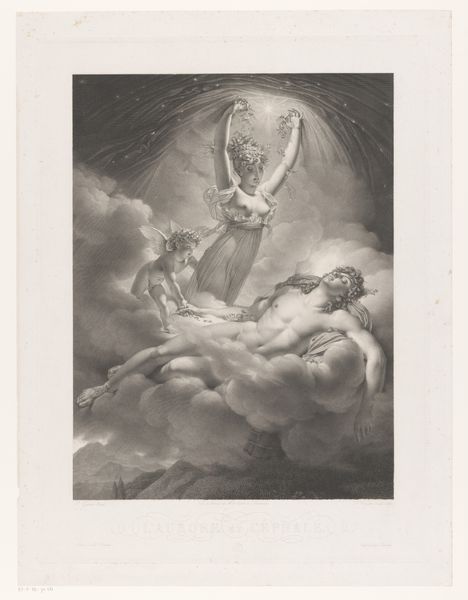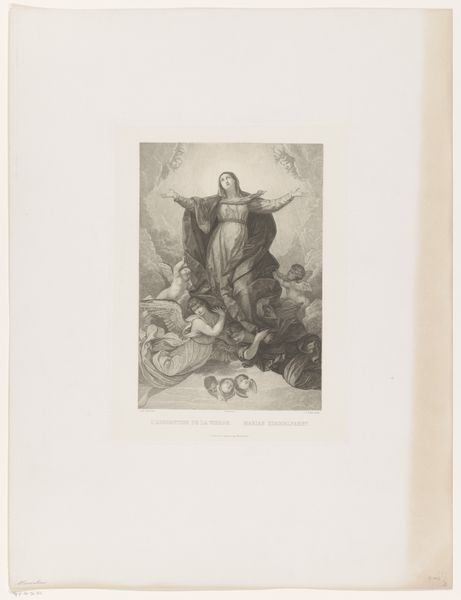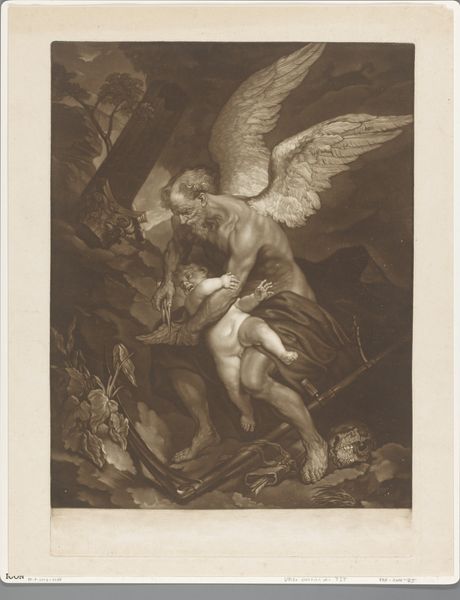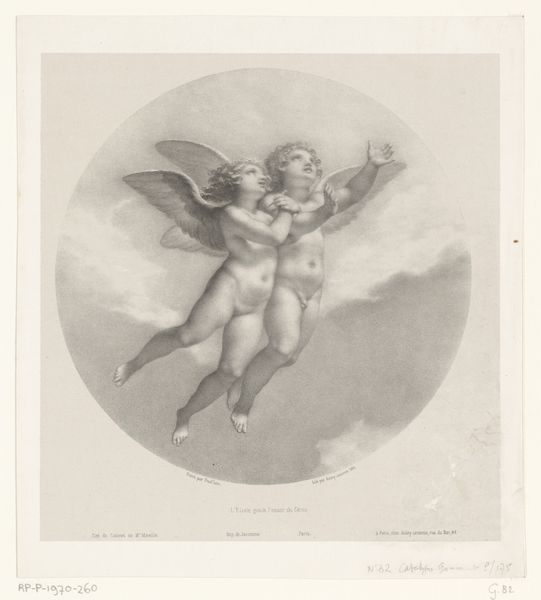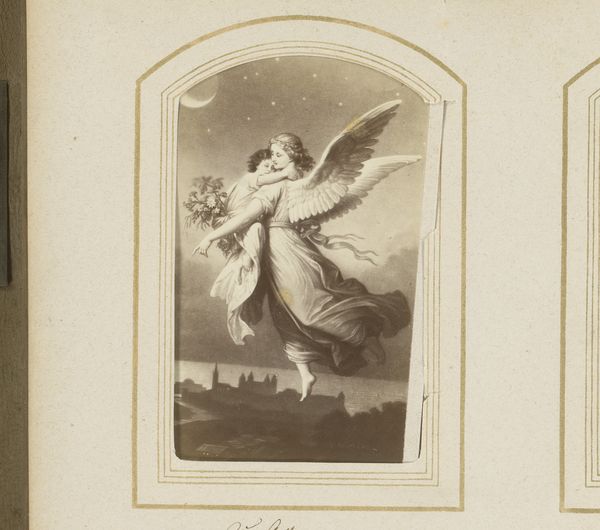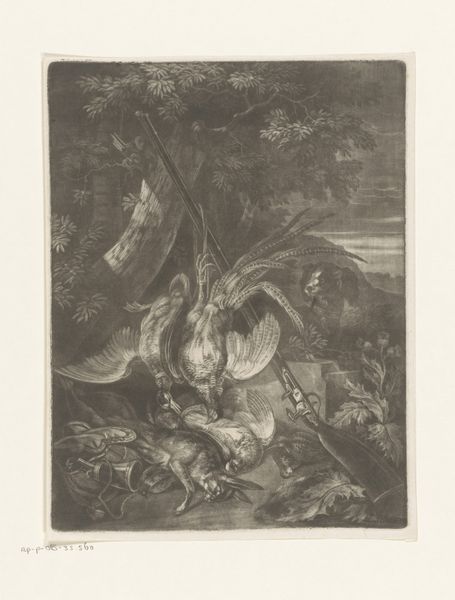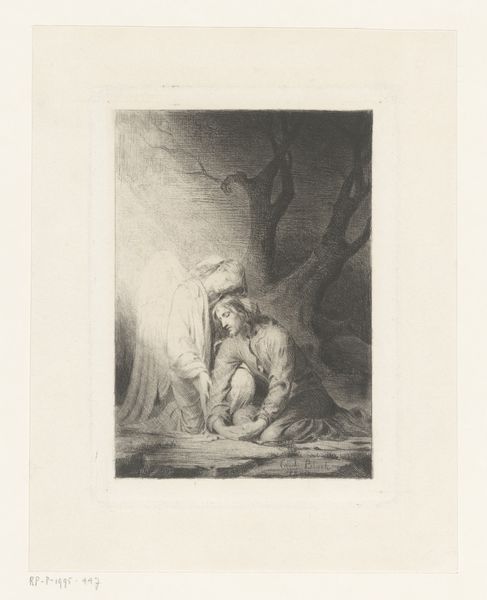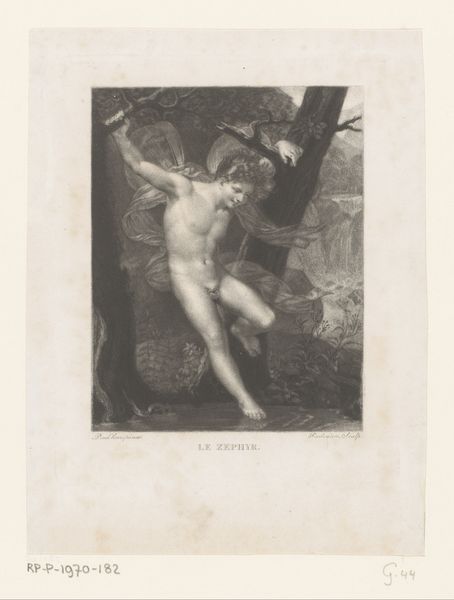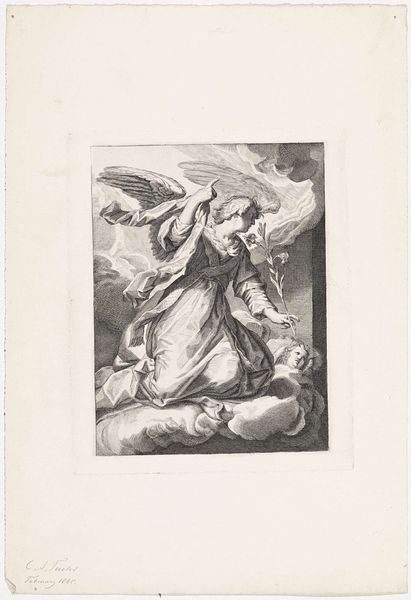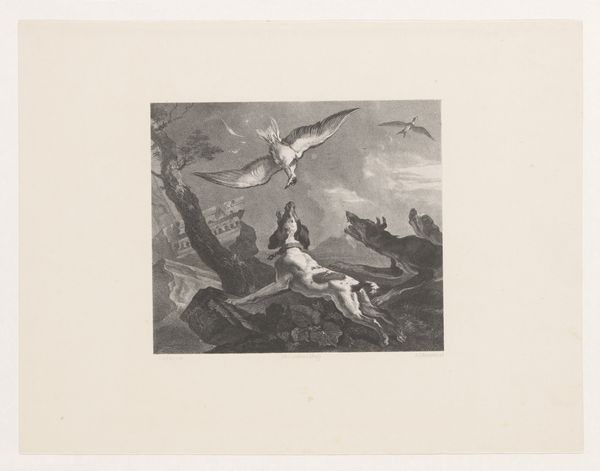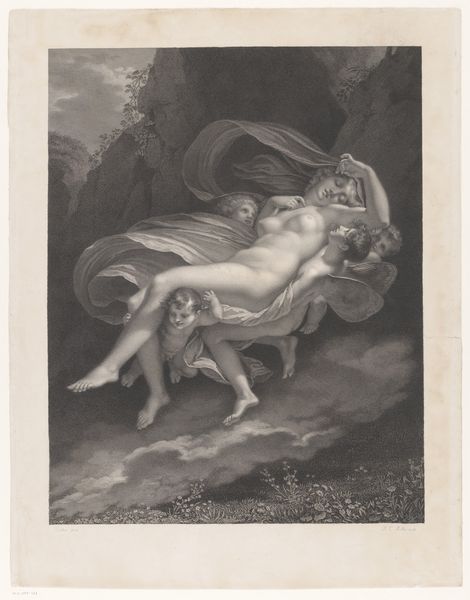
Dimensions: height 330 mm, width 248 mm
Copyright: Rijks Museum: Open Domain
Editor: Here we have Adrien Didier’s “Verlossing van de ziel,” made in 1874. It’s a print, an engraving actually. The figure is really compelling – rising up with this huge wing! I’m curious to hear your insights. What do you see in this piece? Curator: The figuration certainly draws the eye. Notice how the artist uses line to create form and depth. The contrasting values, the stark chiaroscuro, lend the piece a dramatic, almost theatrical quality. The composition hinges on a diagonal axis, ascending from the dark, textural mass at the base to the ethereal light above. What visual effects do you observe from these formal choices? Editor: The diagonal really gives it movement and directs my gaze upward. I hadn’t thought about how much the contrast emphasizes the separation of the figure from… whatever is happening below. Is the bright area light? Is that symbolic? Curator: Perhaps. From a purely formalist perspective, consider the interplay between light and shadow not as mere representation, but as compositional elements in themselves. Light sculpts form, shadow obscures it, and together they generate visual interest and spatial tension. Also, note the sinuous lines, a kind of rhythm and dynamism across the visual field, countered by denser, compacted areas. This echoes, it seems, across foreground and background... Does that relationship affect your reading of this image at all? Editor: I see what you mean; it really guides your eyes across the print. Now that you mention the lines and form and that sort of tension, it all seems more considered. Curator: Precisely! By concentrating on these internal relationships and analyzing the deployment of line, form, light, and texture, we can more clearly describe how this work functions as a visual experience. Editor: So focusing on how these things communicate in their own language, rather than searching for other meanings. I think I’m starting to see the appeal of that method.
Comments
No comments
Be the first to comment and join the conversation on the ultimate creative platform.
